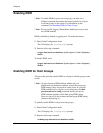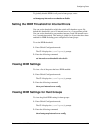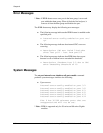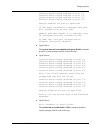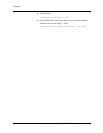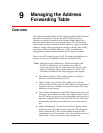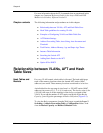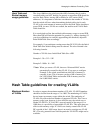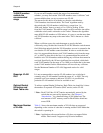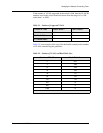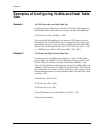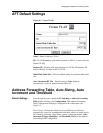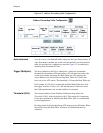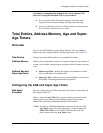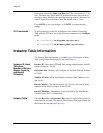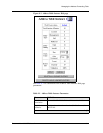
9-4 User Guide for the Avaya P580 and P882 Multiservice Switches, v6.1
Chapter 9
VLAN ID number
outside the
recommended
range
If you use an ID number outside the range of recommended
numbers, you may find certain VLAN ID numbers cause “collisions” and
are unavailable when you try to create a new VLAN.
The reason for this has to do with the way that the switch hashes
VLAN numbers into internal tables. The ‘hash’ algorithm used by
the switch takes VLAN numbers (which have a range from 1 to
4094) and ‘hashes’ them to a range of 1 to 1024 by picking 10 bits
from the VLAN number. This smaller range is used as an index into tables
within the switch, and is referred to as the ‘index’. Because the algorithm
maps 4096 VLAN numbers to 1024 indexes, it is easy to see that more then
one VLAN number may map to the same index. This is known as a ‘hash
collision’.
When a collision occurs, the switch attempts to resolve the hash
collision by using 10 other bits from the VLAN ID. When the switch cannot
find 10 bits that uniquely hash the VLAN number, an error is returned to the
user that the VLAN number cannot be added. In order to avoid this situa-
tion, it is suggested that the user pick VLAN numbers only from the range
of 1 to 1000, as when this is the case, it is guaranteed that the switch can
hash this set of VLAN numbers without having any collisions that cannot be
resolved. Specifically, the 10 least significant bits are picked, which hash
each VLAN number (in the range of 1 to 1000) to an index that is the same
as the VLAN number. In this situation there will never be any collisions.
See the Maximum Number of VLANs Supported section for valid
ranges.
Reassign VLAN
IDs?
It is not recommended to reassign VLAN numbers in a switch that is
currently using VLAN numbers outside the range of 1 to 1000. The only
potential issue is an attempt to add more VLANs, it is possible that
particular VLAN numbers will not be available to use.
Optimal Bucket
Utilization and
Hash Table size
To achieve optimal Bucket Utilization, Hash Table size should be ¼ times
the number of expected AFT entries (MAC entries) on the VLAN.
* Note: Each VLAN has 18 AFT entries automatically entered by the
switch that are reserved for internal use. (See Chapter 1,
“Introduction,” for a detailed listing of Self Addresses).The
total amount of AFT memory used for Hash Tables should not
exceed 20K.
Maximum Number
of VLANs
Table 9-1 shows the maximum number of VLANs that are supported
depending on the version of code that is running and the Fabric Mode that
the switch is operating in.
* Note: Application software earlier than v5.0 does not support Fabric
modes. Fabric mode 2 supports only 80-series hardware.



